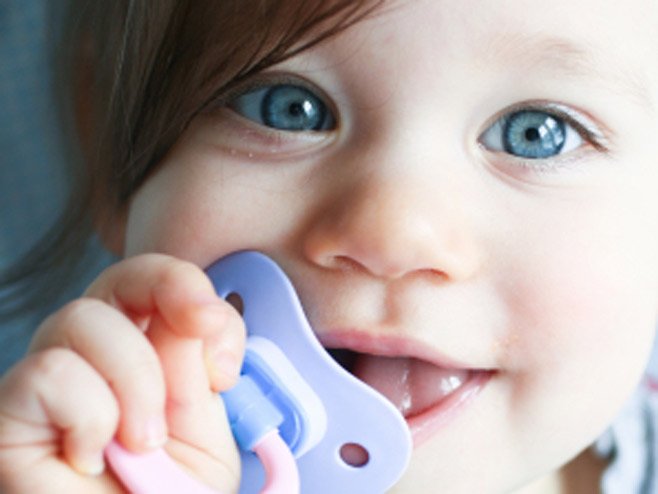Babies have a strong need for “non-nutritive sucking,” and as they grow, kids can naturally become very attached to a pacifier for comfort. Saying goodbye is a big deal for some children.
The average recommendation is to let go of the pacifier around age two. Between two and three-years-old, especially if kids are sucking during the day (not just to fall asleep), it can lead to dental malformations and speech delays. For example, a recent study found that children who are still using a pacifier at age three are three times as likely to have impaired speech.
As with many creature comforts, the earlier you try to set them free, the easier time you will have – as kids grow, so does their attachment to their favorite items. Especially during naptime, the pacifier can become a crutch that, when it’s gone, gets in the way of important slumber. If you’ve got a younger baby who is using a pacifier, consider weaning the children together, because the little one’s pacifier will be a temptation for the older sibling.
How to let go.
No matter what age you do it, keep a few important guidelines in mind. First of all, if your child is heavily attached and particular about the pacifier, prepare them in advance. Even by the age of one, a child will understand enough to benefit from a heads up, so talk about the change with your little one for at least a few days before. You can tie it to a birthday if the child is two or older, or with a significant event like moving, taking a trip, or a doctor’s visit. This can help make the change more concrete.
Try to involve your child in the transition so that they feel some ownership over it. You can create a ritual or “goodbye party,” asking for them to input the details. Decorate a box together, put in the pacifiers, and “mail it” to the younger babies, or put it in an envelope overnight and replace it with a “big girl or big boy” gift for the next day (a la the tooth fairy).
If your child uses the pacifier to fall asleep, you might want to give them a blankie or, if they are old enough to sleep with one, a small stuffed animal in the crib for comfort. Prepare for some rough nights or naptimes as your child figures out how to sooth herself to sleep in a new way. In the initial days, have some treats on hand, like popsicles, or a few entertaining activities or trips planned for distraction.
Try to be as consistent as possible — once you’ve said goodbye, try to be matter-of-fact about the transition. Eventually your child will let go and move on.








